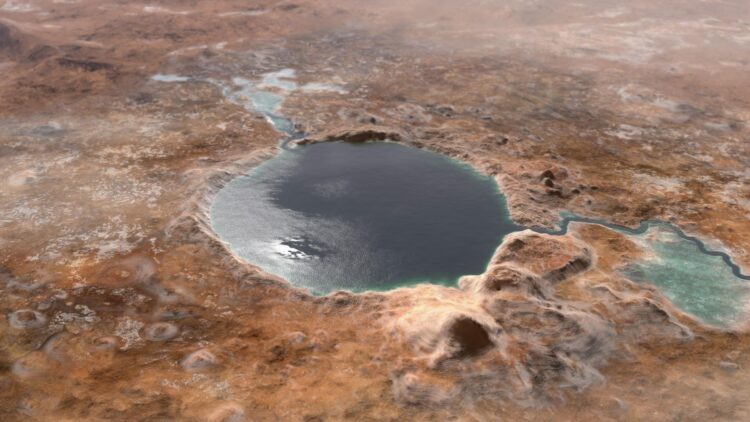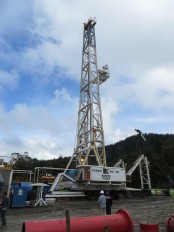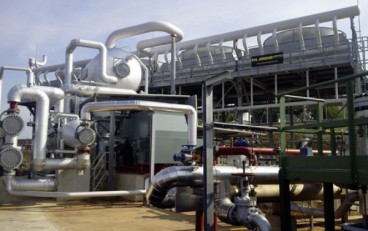Mars may host deep geothermal energy reservoirs beneath its crust

Researchers have identified evidence suggesting that Mars may possess substantial thermal-energy reservoirs beneath its crust, offering potential sustainable power sources for future human missions or long-term habitats. The analysis highlights Mars’s internal heat and geological structure as possible enablers for geothermal or thermally-driven energy systems.
According to the report, the planet’s crust-and-upper-mantle configuration—especially in regions such as the Tharsis-Valles Marineris zone—may provide sufficient geothermal gradients favorable for energy extraction, either for direct heating or electricity generation. The concept stems from Mars’s residual heat, volcanic history and potential subsurface fluid pathways, which might amplify heat-extraction viability.
The article emphasizes that unlike solar or wind power, geothermal systems could deliver continuous and steady thermal energy on Mars, as they would not be dependent on daylight or atmospheric conditions. It notes that future mission planners are considering drilling-oriented infrastructures to tap into this subsurface heat, although significant technical challenges remain.
The implications for civil and environmental engineers include design of drilling systems, subsurface heat-exchange circuits, structural support for heat-extraction wells, and integration of energy networks in Mars’s terrain. Robust foundation, casing and piping design will need to account for Martian gravity, soil conditions, thermal gradients and resource logistics.
Despite the promise, the article also warns of the substantial obstacles: the cost and complexity of deep-well drilling on Mars, the extreme environment of the planet’s crust, and uncertainties about heat-flux magnitude and resource distribution. Engineers would need to adapt terrestrial geothermal technologies (well drilling, heat exchangers, fluid loops) for off-Earth conditions, including reduced gravity, temperature extremes, and remote construction.
This review underscores the strategic importance of exploring geothermal options in planetary design for Mars infrastructure, offering engineers a novel frontier where geotechnical, structural, thermal-system and resource-integration disciplines converge in extraterrestrial settings.
Source: EcoPortal
Want to read more like this story?

UK risks missing out on major geothermal energy opportunity
Nov, 11, 2025 | NewsThe United Kingdom faces a significant risk of falling behind in the deployment of geothermal energ...

South America map reveals 6,000 GW of untapped geothermal power
Oct, 17, 2025 | NewsProject InnerSpace today announced the launch of GeoMap™ South America, a geothermal exploration p...

Three geothermal deep wells to be drilled in Košice, Slovakia
Oct, 16, 2025 | NewsThe city of Košice in eastern Slovakia is initiating a geothermal development project with the dril...

This geothermal power plant in France takes advantage of heat tapped in deep rock, supplying electricity to 3,000 households
Oct, 17, 2017 | NewsThe site was formerly used as a research facility The site was formerly used as a research facility...

Drilling deeper: New Zealand explores supercritical geothermal
Oct, 15, 2025 | NewsNew Zealand’s government has allocated NZ$60 million to accelerate exploration of supercritical geo...

This new, energy-optimized school building utilizes solar and near-surface geothermal energy
Oct, 02, 2017 | NewsDuring its first year of operation, the heat pumps have contributed their planned share to the heat...

California bill expands clean energy certification to geothermal
Oct, 16, 2025 | NewsThe State of California has passed legislation to incorporate geothermal energy facilities into its...

Polis Administration Awards $7.3 Million for Innovative Geothermal Heating and Cooling
Oct, 18, 2025 | NewsThe Colorado Energy Office (CEO) announced $7.3 million in awards through the third cycle of the Co...

Heat produced by an underground line to warm houses in London
Sep, 05, 2019 | NewsA brand-new innovative plan suggests utilizing heat produced by an underground line to warm houses d...
Trending

Vertical gardens in Mexico City to combat pollution

Characteristics of Load Bearing Masonry Construction

Taipei 101’s impressive tuned mass damper

Morocco Implements Landmark Dam Perforation to Combat Water Stress in Marrakech

Dutch greenhouses have revolutionized modern farming

The Line at Neom faces feasibility reassessment while construction continues

A new chapter for Sunderland: The £31 million Keel Crossing opens

